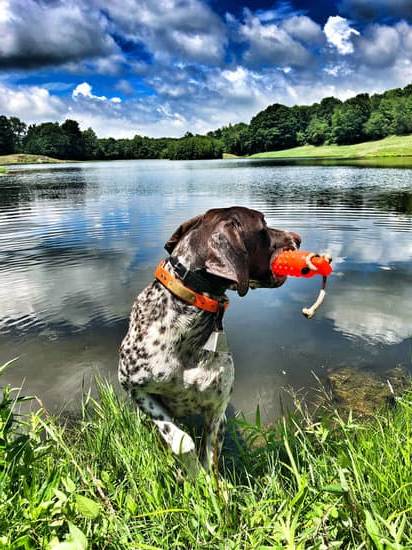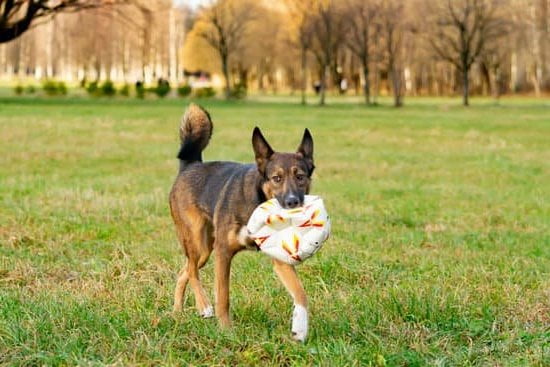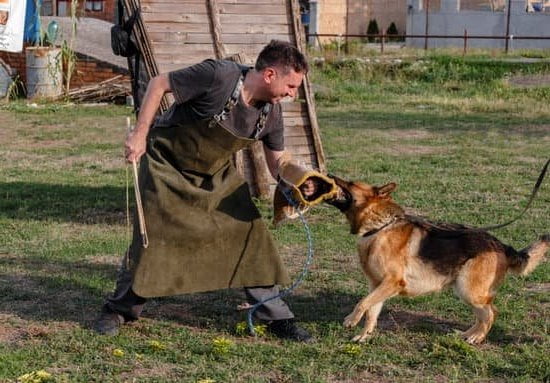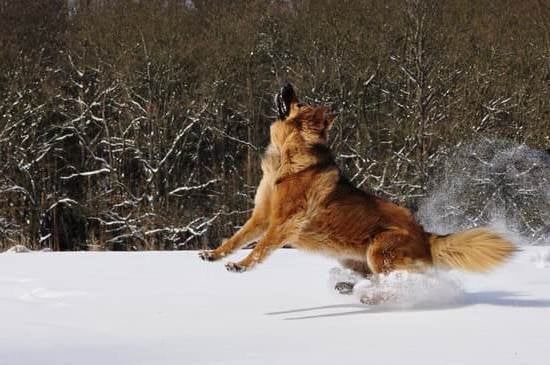How do you train a dog to stop biting? Dog biting can be frustrating and even dangerous, but with the right training, it can be corrected.
Understanding why dogs bite is crucial in addressing this behavior. In this article, we will discuss common reasons why dogs bite, the importance of early socialization and training, positive reinforcement training methods, teaching commands to stop biting, redirecting biting behavior with appropriate toys and chew treats, recognizing signs of aggression and seeking professional help, as well as tips for success in training a dog to stop biting.
Dogs may exhibit biting behavior for various reasons, and it is essential to understand these motivations in order to effectively address the issue. Whether it’s out of fear, pain, or simply a natural instinct, identifying the root cause is the first step towards successful training.
Early socialization and consistent training are key factors in preventing and correcting biting behavior in dogs. By creating positive associations with people and other animals through exposure and reinforcement from an early age, dogs can learn appropriate ways to interact without resorting to biting. Additionally, positive reinforcement training methods offer a gentle yet effective approach to discourage biting while promoting desirable behaviors.
In the following sections, we will delve deeper into the common reasons behind dog biting behavior and explore various techniques for effectively training a dog to stop biting. With patience and commitment from dog owners, it is possible to build a trusting and safe relationship with their furry companions through proper training.
Common Reasons Why Dogs Bite
There are several common reasons why dogs may exhibit biting behavior. Understanding these reasons is essential in addressing and preventing this behavior through training and socialization.
1. Fear and Anxiety: Dogs may bite out of fear or anxiety, especially in unfamiliar or stressful situations. This could occur when a dog feels threatened, cornered, or startled.
2. Playfulness: Puppies and younger dogs often use their mouths to explore the world around them, including playfully nipping at people or other animals. However, if not properly trained, this playful behavior can turn into biting.
3. Protection: Dogs may perceive a threat to themselves, their property, or their family members and respond with biting as a means of protection.
Understanding these common reasons for biting behavior is crucial in implementing effective training methods to address the issue.
To address these issues and train a dog to stop biting, it’s important to focus on positive reinforcement training methods that promote good behavior. By using rewards such as treats, praise, and toys, you can encourage your dog to exhibit desirable behaviors and discourage biting. Additionally, teaching commands such as “leave it” and “drop it” can help in redirecting biting behavior towards appropriate toys and objects.
Consistency and patience are key in successfully training a dog to stop biting. With dedication and the right approach, you can build a trusting and safe relationship with your canine companion through proper training techniques.
The Importance of Early Socialization and Training
Early socialization and training are crucial in preventing biting behaviors in dogs. Puppies, in particular, go through a critical socialization period between 3 and 14 weeks of age. During this time, they are more receptive to new experiences and can form positive associations with people, other animals, and the environment. It is important to expose puppies to a wide variety of social situations, sounds, and environments during this period to help them become well-adjusted adults.
Proper training also plays a significant role in preventing biting behavior. Teaching puppies basic commands such as sit, stay, and come can help them understand boundaries and learn appropriate behavior. Additionally, positive reinforcement techniques such as rewarding good behavior with treats or praise can be effective in shaping a puppy’s behavior.
Early socialization and training also help puppies develop bite inhibition, which is the ability to control the force of their bites. Puppies naturally explore the world with their mouths, but it is essential to teach them that biting humans or other animals is not acceptable. By providing appropriate outlets for chewing and teaching puppies to use their mouths gently through play and interaction with humans and other pets, they can learn bite inhibition effectively.
Positive Reinforcement Training Methods to Stop Biting
When it comes to training a dog to stop biting, positive reinforcement is a highly effective method that focuses on rewarding good behavior rather than punishing bad behavior. This approach not only helps in stopping the biting behavior but also strengthens the bond between you and your dog.
Using Treats and Praise
One of the most common positive reinforcement methods for stopping biting is using treats and praise. Whenever your dog shows good behavior by not biting, immediately reward them with their favorite treat and praise. This will help them understand that not biting leads to positive consequences.
Clicker Training
Another effective way to use positive reinforcement for stopping biting is through clicker training. By clicking a small device each time your dog shows non-biting behavior, followed by a treat, they will associate the click with being rewarded. This method helps in teaching your dog what behaviors are desirable and can effectively redirect their attention from biting.
Consistency and Patience
It’s important to remember that training a dog to stop biting takes time, consistency, and patience. Dogs learn at their own pace, so it’s essential to be patient and continue reinforcing good behavior consistently. Remember that every interaction with your dog is an opportunity for training, so stay committed to the process.
By using these positive reinforcement training methods, you can effectively train your dog to stop biting while also strengthening the trust and bond between you and your furry companion. With patience, consistency, and the right approach, you can successfully eliminate this unwanted behavior in your beloved pet.
Teaching the Leave It and Drop It Commands
Understanding the Leave It Command
The “leave it” command is crucial in training a dog to stop biting. This command teaches your dog to leave something alone, whether it’s a toy, food, or an object that they shouldn’t have. To teach the “leave it” command, start with a treat in one hand and make a fist.
Allow your dog to sniff and lick your hand, but as soon as they stop trying to get the treat, say “leave it” and then reward them with a different treat. With consistent practice, your dog will learn to respond to the “leave it” command.
Introducing the Drop It Command
The “drop it” command is just as important as the “leave it” command in preventing biting behavior in dogs. This command instructs your dog to release an item from their mouth when asked. To train this command, offer your dog a toy or object and let them grab onto it.
Then show them a treat and say “drop it.” Once they release the item, reward them with the treat. It may take some time for your dog to understand this command, but with patience and practice, they will learn to drop items on cue.
Reinforcing Good Behavior
Consistency is key when training a dog to stop biting. Use the “leave it” and “drop it” commands consistently during playtime or when your dog exhibits unwanted behavior. Rewarding them for obeying these commands reinforces good behavior and helps in redirecting their biting tendencies.
Using positive reinforcement methods such as treats, praise, and playtime can effectively teach your dog to stop biting. Remember that every interaction with your pet is an opportunity for training, so be patient and consistent in using these commands to build a trusting and safe relationship with your furry friend.
Overall, teaching the “leave it” and “drop it” commands is essential in addressing biting behavior in dogs. These commands not only help prevent aggressive behaviors but also allow you to redirect their attention towards more appropriate activities. With consistent training and positive reinforcement methods, you can effectively teach your dog to stop biting.
Redirecting Biting Behavior With Appropriate Toys and Chew Treats
When it comes to training a dog to stop biting, one effective method is to redirect their biting behavior towards appropriate toys and chew treats. By providing your dog with suitable items to bite and chew on, you can help satisfy their natural urge to gnaw while also preventing them from engaging in unwanted biting of people or objects.
To successfully redirect your dog’s biting behavior, consider the following tips:
- Provide a variety of chew toys: Offer your dog a selection of chew toys with different textures, shapes, and sizes. This will help keep them engaged and satisfied, reducing the likelihood of them resorting to biting people or furniture.
- Introduce chew treats: In addition to chew toys, consider giving your dog tasty chew treats that are specifically designed to promote dental health and provide relief for teething puppies or adult dogs with strong chewing instincts.
- Supervise chewing sessions: Whenever you give your dog a new toy or treat, it’s important to supervise their chewing sessions initially. This way, you can ensure they are using the items appropriately and intervene if they show any signs of aggression.
By redirecting your dog’s biting behavior with appropriate toys and chew treats, you can effectively discourage them from engaging in destructive or aggressive biting while also promoting good oral hygiene and mental stimulation.
Understanding the Signs of Aggression and Seeking Professional Help
Dogs may exhibit aggressive behavior for various reasons, and it’s essential for dog owners to understand the signs of aggression in order to address them effectively. Aggression can manifest as growling, showing teeth, snapping, or biting. It’s crucial to recognize these behaviors early on to prevent any potential harm to humans or other animals. If a dog is displaying signs of aggression, seeking professional help from a veterinarian or a certified dog trainer is imperative.
Professional help can provide valuable insights into the underlying causes of a dog’s aggression. It can also offer personalized training and behavior modification plans tailored to the specific needs of the dog. Training and socialization play a significant role in addressing aggressive tendencies in dogs, and professional guidance can make a substantial difference in achieving successful results.
In some cases, aggression in dogs may be related to fear or anxiety. A professional can conduct a thorough evaluation to determine the triggers of the aggressive behavior and develop strategies to desensitize the dog through positive reinforcement training techniques. By working with a professional, dog owners can gain a better understanding of their pet’s behavior and learn effective methods to train their dog to stop biting, ensuring a safe environment for everyone involved.
| Reasons for Seeking Professional Help | Benefits |
|---|---|
| Understanding underlying causes of aggression | Personalized training and behavior modification plans |
| Determining triggers of aggressive behavior | Learning effective methods for training the dog to stop biting |
Consistency and Patience
Training a dog to stop biting requires consistency, patience, and positive reinforcement. It is important to remember that dogs may not understand right away why biting is unacceptable behavior. It is the owner’s responsibility to be patient and consistent in teaching the dog what is and isn’t appropriate. Keep in mind that every dog learns at their own pace, so it’s essential to stay patient throughout the training process.
Consistency is key when training a dog to stop biting. This means that all members of the household should approach the training in the same way. Inconsistencies can confuse the dog and hinder the training progress. Whether it’s using specific commands or redirecting biting behavior, everyone involved with the dog should be on the same page.
Positive reinforcement is also crucial in stopping biting behavior. When your dog displays non-biting behavior, such as licking instead of nipping, be sure to reward them with treats, praise, or affection. This will help reinforce the idea that gentle behavior is desirable. Redirecting your dog’s attention from biting onto an appropriate toy or treat can also reinforce positive behavior and discourage biting.
| Training Method | Description |
|---|---|
| Positive Reinforcement | Rewarding non-biting behavior with treats, praise, or affection. |
| Redirecting Attention | Using toys or chew treats to redirect your dog’s biting behavior onto appropriate items. |
Conclusion
In conclusion, training a dog to stop biting is crucial for building a trusting and safe relationship with your pet. Understanding the reasons behind why dogs bite and recognizing signs of aggression is essential in addressing this behavior. Early socialization and training play a significant role in preventing biting, as it helps dogs learn appropriate behaviors and reactions to different situations.
Positive reinforcement training methods are highly effective in teaching a dog to stop biting. By rewarding desirable behaviors with treats and praise, you can encourage your dog to exhibit non-aggressive behavior. Additionally, teaching commands like “leave it” and “drop it” can give you control over your dog’s urge to bite or chew on things they shouldn’t.
Redirecting biting behavior with appropriate toys and chew treats is also an important part of the training process. Providing your dog with alternatives to biting on objects or people can help satisfy their natural chewing instincts while preventing harmful behavior.
By consistently implementing these training methods with patience and understanding, you can effectively train your dog to stop biting. Remember that seeking professional help is always an option if you are having difficulty addressing aggressive behavior in your dog. Ultimately, building a trustworthy and safe relationship with your furry companion requires dedication to proper training techniques and reinforcing positive behaviors.
Frequently Asked Questions
Can a Dog Be Trained Not to Bite?
Yes, a dog can be trained not to bite through consistent and positive reinforcement training. Using methods like redirecting their attention, teaching the “leave it” command, and providing appropriate chew toys can help discourage biting behavior.
How Do You Discipline a Dog That Keeps Biting?
Disciplining a dog that keeps biting requires a combination of techniques such as using a firm “no” command, walking away to show disapproval, and redirecting their behavior towards acceptable alternatives like chew toys. It’s important to avoid physical punishment as it can escalate aggression.
How Do I Get My Dog to Stop Biting Me?
To get your dog to stop biting you, it’s crucial to understand the root cause of their behavior. Address any underlying issues such as fear or anxiety, provide plenty of exercise and mental stimulation, and seek guidance from a professional trainer if needed. Consistency and patience are key in stopping the biting habit.

Welcome to the blog! I am a professional dog trainer and have been working with dogs for many years. In this blog, I will be discussing various topics related to dog training, including tips, tricks, and advice. I hope you find this information helpful and informative. Thanks for reading!





